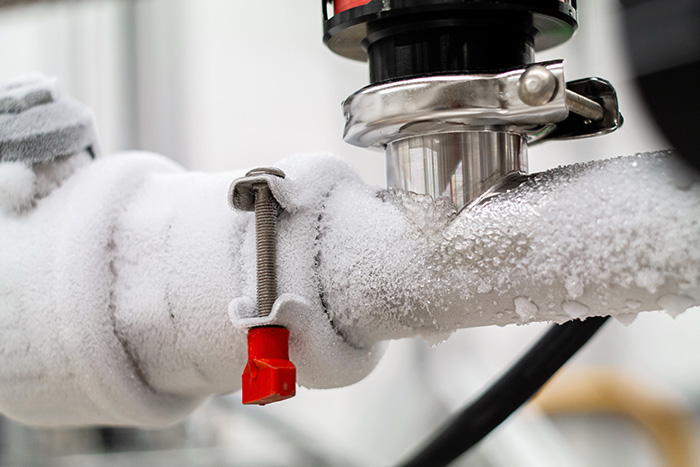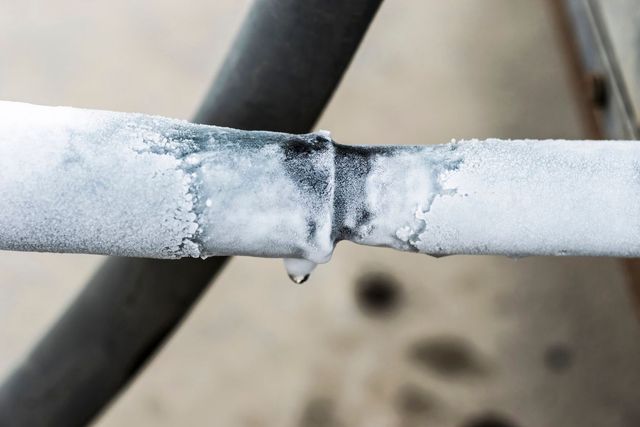Handling a Frozen AC Pipe - Advice for Addressing the Issue
Handling a Frozen AC Pipe - Advice for Addressing the Issue
Blog Article
This great article following next relating to How can I fix an air conditioner’s frozen pipe? is seriously motivating. Give it a try and draw your own personal conclusions.

Introduction
Uncovering that your AC pipeline is frozen can be worrying, particularly throughout hot summer months when you count on your ac unit the most. Understanding what to do in such a scenario is essential to stop further damage to your air conditioning system and ensure your comfort inside.
Understanding the Causes
A number of factors can contribute to the cold of an air conditioner pipe. Recognizing these causes can help you address the issue successfully.
Lack of Airflow
One typical cause of a frozen air conditioning pipe is inadequate air movement. When the air movement over the evaporator coil is limited, it can create the coil to go down below freezing temperature level, resulting in ice formation on the pipe.
Low Refrigerant Levels
Insufficient cooling agent degrees in your a/c system can likewise lead to a frozen pipeline. Low cooling agent levels can cause the stress in the system to go down, resulting in the freezing of dampness on the evaporator coil.
Cold Weather Conditions
In colder environments, freezing temperature levels outside can contribute to the cold of a/c pipes. If your air conditioner unit is not effectively protected or if there are leakages in the ductwork, chilly air can penetrate the system, triggering the pipe to ice up.
Dirty Air Filters
Unclean or blocked air filters can limit air flow in your air conditioner system, leading to different concerns, including an icy pipeline. It's necessary to change or cleanse your air filters consistently to ensure appropriate air flow and protect against ice build-up.
Signs of a Frozen Air Conditioning Pipe
Acknowledging the indications of a frozen a/c pipe is vital for punctual activity.
Decreased Airflow
If you see a significant reduction in air flow from your vents, it could suggest a frozen pipeline.
Ice Buildup on the Pipe
Noticeable ice buildup on the refrigerant line or the evaporator coil is a clear indication of an icy AC pipeline.
Odd Sounds from the Unit
Unusual sounds, such as hissing or gurgling, coming from your air conditioner system can signal that there's ice existing on the pipe.
Immediate Actions to Take
When faced with an icy AC pipeline, it's important to act rapidly to stop more damage to your air conditioning system.
Turning off the a/c
The initial step is to switch off your air conditioner to avoid the system from running and aggravating the issue.
Checking for Blockages
Inspect the area around the indoor system for any kind of obstructions that may be blocking air flow, such as furnishings or drapes.
Thawing the Pipe
You can use mild approaches like positioning towels taken in cozy water around the icy pipeline to aid thaw it gradually.
Safety nets
Taking safety nets can aid stay clear of future events of an icy a/c pipeline.
When DIY Methods Fail
If your attempts to thaw the pipe or address other concerns are not successful, it's time to call in a specialist.
Relevance of Hiring a Professional HVAC Technician
A licensed HVAC service technician has the expertise and tools needed to detect and repair concerns with your a/c system securely and effectively.
Regular Maintenance Checks
Set up regular upkeep contact a professional HVAC technician to make sure that your AC system is running successfully.
Altering Air Filters
Regularly replace or cleanse your air filters to prevent air flow constraints and keep optimal performance.
Protecting Exposed Pipes
If your air conditioner pipes are subjected to cool temperature levels, consider protecting them to avoid freezing throughout cold weather.
Looking For Professional Help
If DIY approaches fall short to deal with the issue or if you're uncertain about how to proceed, it's ideal to look for help from a qualified HVAC professional.
Final thought
Dealing with an icy air conditioner pipe can be a frustrating experience, yet knowing just how to respond can assist minimize damages and restore comfort to your home. By understanding the reasons, recognizing the indications, and taking punctual action, you can successfully resolve the issue and stop future events.
What to Do If Your AC Line Is Frozen
Make Sure All Supply and Return Air Vents Are Open
If you notice problems with airflow, the first thing you should do is check your supply and return vents. Supply vents distribute clean, conditioned air throughout your home. As this air becomes stale, it’s pulled into the return vent, where it’s reconditioned before being sent back out through the supply vent.
When these vents are closed, air won’t flow in the home. Before examining your AC, check the vents in every room and ensure they’re all open.
Check for a Dirty Air Filter
Another possible cause of limited airflow is a dirty air filter. Your air conditioner’s filters catch elements you don’t want to breathe in, such as dirt and dust. Over time, filters can become clogged, ultimately blocking air from flowing in and out. The lack of airflow can then cause the entire coil to freeze and will completely restrict any air from moving through it. The AC may need to be powered off for one to two days to allow the coil to thaw after replacing the filter to allow proper functioning of the unit. This debris can also accumulate on your AC’s evaporator coil, requiring a more serious repair. In general, air filters should be cleaned regularly (about every two weeks).
Assess Your Outdoor Unit
In addition to checking your AC, assessing the outdoor unit is a good idea. Also known as the condensing unit, it works with your interior unit to release heat outside. An issue with the outdoor unit can result in rising internal temperatures.
Overgrown Shrubs or Clogged Leaves
From leaves and twigs to shrubs and debris, there’s no shortage of outdoor elements that can accumulate around your condensing unit. When these elements get lodged inside the unit, they can block airflow. Fortunately, removing the blockage can solve the problem.
Sounds of a Broken Fan
Shrubs and leaves aren’t the only things that can impede your outdoor unit’s airflow. If the fan is broken, the unit won’t be able to properly get rid of heat — which means the internal temperature won’t go down. First, make sure the fan is spinning. If it is, check for the following sounds of a broken fan:
Buzzing Rattling Screeching Hissing Clicking Preventative Measures
Nobody wants to deal with a frozen AC line. In addition to causing problems with your air conditioner, they require professional repairs. On the bright side, there are preventative measures you can take to help ensure this issue doesn’t arise in the first place.
https://www.coopergreenteam.com/blog/what-to-do-if-ac-line-frozen

I ran across that article on How can I fix an air conditioner’s frozen pipe? when browsing the search engines. Are you aware of somebody who is sincerely interested in What Causes AC Pipes To Freeze?? Do not hesitate to promote it. I treasure reading our article about Have a Frozen AC Line? Here’s How to Fix It.
Booking Report this page